Cervical Spondylosis: Cause, Symptoms, Treatment, Exercise
Table of Contents
What is spondylosis?
- Spondylosis is a term used to describe pain from degenerative joint disease. In spondylosis, degeneration occurs in the spine. Common spondylosis symptoms result from spinal osteoarthritis.
What is cervical spondylosis?
- Cervical spondylosis is arthritis of the neck that may result from compression of the spinal cord, the spinal nerve roots, or both.
- Cervical spondylosis is common & worsens with age. most common causes of cervical spondylosis dysfunction in patients over the age of 55.
- Cervical spondylosis is a degenerative disease of the cervical spine, intervertebral discs, ligaments, and cartilaginous material that also includes the degenerative changes in the facet joints, longitudinal ligaments, and ligamentum flavum.
- Common spondylosis commonly progresses with age and develops at multiple inter-spaces.
- Cervical spondylosis is a condition that causes progressive spinal cord and nerve root compression.
- Cervical spondylotic changes can result in stenosis of the cervical spinal canal leading to myelopathy, lateral recess, and foramina leading to radiculopathy in both the limbs.
- The course of cervical spondylosis may be moderate & prolonged.
- Both sexes are affected equally.
- It is asymptomatic or causes mild neck pain.
Anatomy of the Neck region :
- The seven small vertebrae that start at the base of the skull & form the neck are known as the cervical spine.
- The spinal cord & nerves travel through the spinal canal carrying messages between the brain & muscles. These Nerve roots branches are out from the spinal cord through the foramen in the vertebrae.
- Intervertebral disks are located in between vertebrae & act as shock absorbers when you walk or run or do jumping activities.
Intervertebral disks are invited by 2 parts :
- Annulus fibrosus: Annulus fibrosis is the tough, flexible outer ring of the disk.
- Nucleus pulposus: The nucleus pulposus is a soft, jelly-like center of the disk.
Bio-Mechanics of The Neck
- The neck has 6 movements in the Cervical spine, These movements are Neck flexion, extension, side flexion on either side and Rotation on both sides, mostly all these movements are higher at the level of cervical c4-c5-c6 vertebrae, higher the movement, the higher the wear and tear so mostly all these arthritis changes are seen in the level of cervical c4-c5-c6 vertebrae.
Pathophysiology
- Cervical spondylosis is caused by degeneration of the intervertebral discs, which fragment, lose water content, and collapse with normal aging.
- Disc degeneration causes increased stress at the cartilaginous end plates of the vertebral body.
- This results in subperiosteal bone formation or osteophytic formation that extends along the ventral aspect of the spinal canal and, in some cases, affects nervous tissue.
- The discs between the third and seventh cervical vertebrae are affected most commonly. Repeated occupational trauma may lead to the development of cervical spondylosis.
- Cervical spondylosis increased in patients who carried heavy loads on their heads or shoulders, dancers, gymnasts, and patients with spasmodic torticollis.
- In 10% of patients, cervical spondylosis is connected to congenital bony deformity torticollis, malformed laminae, and block vertebrae that place stress on intervertebral discs.
- Cervical spondylosis may result in symptomatic spinal cord compression.
- The congenitally narrow space in the spinal canal (diameter of 10 to 13 mm) in patients with spondylotic myelopathy
- Symptomatic spinal cord compression occurs as degenerative spinal changes result in a further develop mentally narrow spinal canal.
Cervical spondylosis causes:
- We just have to get down in our lives, not just as we get older.
- Anyone who has a business, especially a job that involves reversible neck movements, restlessness, or just a lot of hard overhead work, will be more stressful on the neck.
- Better wear and tear means this condition is more likely to appear.
- Previous injuries to the neck will also increase the risk of cervical spondylosis, even if not treated properly.
- If many people in your family have a history of spondylosis, there is likely to be a stronger genetic predisposition to get it.
- And of course, smokers. Smoking is associated with many conditions of the spine, including osteoporosis and degenerative disc diseases.
- It is a lifestyle choice that is associated with a higher risk of cervical spondylosis.
- As a result, cervical spondylosis often develops as a result of changes in the neck joint by the age of 40. from which the spinal discs become dry and begin to contract by lowering the cartilage between them.
- The pressure from the compressed disc and bone at this stage can put more pressure on the spine and root of the nerve. This results in pain in the joints and difficulty moving the neck. Bones and ligaments are hardened, infiltrating the spinal cord.
- Another cause could be an old injury to the neck and poor posture. This posture can affect not only the hands but also the feet.
Other factors affecting cervical spondylosis include prolonged retention of the neck position or repetition of similar neck movements.
- People who are very active in work or sports and have some long-term upbringing such as axial load-bearing, professional dance, and gymnastics, and have been involved in martial arts for many years, are more likely to develop cervical spondylosis.
- After reaching the age of 60, most individuals experience signs of cervical spondylosis, which can be seen in tuberculosis observations.
- Being overweight and not exercising properly can make the disease worse.
- Overload activities that require a lot of bending and bending for heavy lifting put a stretch on the neck.
- Long-term spinal cord surgery, torn or slipped discs, severe arthritis, and osteoporosis are other causes of spine fractures.
Bone spurs:
These excess growths of bone are the result of the body trying to grow extra bone to make the spine stronger. However, the extra bone can press on the delicate parts of the spine, such as the spinal cord & nerves, resulting in pain.
Dehydrated spinal discs:
Spinal bones have discs between them, which are thick, pad-like cushions that absorb the shock of lifting, twisting, & other activities. The gel-like material inside these discs can dry out at the time. This causes spinal vertebrae to rub together more, & which can be painful.
Herniated discs:
Spinal discs can evolve cracks, which allow leakage of the internal cushioning material. This material can press on the spinal cord & nerves, resulting in symptoms such as arm numbness as well as pain that radiates down an arm. Learn more about herniated discs.
Injury:
If you have had an injury to the neck (during a fall or car accident, for example), this can accelerate the aging process.
Ligament stiffness:
The tough cords that connect the spinal bones to each other can become even stiffer over time, which affects neck movement & makes the neck feel tight.
Overuse:
Some occupations & hobbies involve repetitive movements & heavy lifting (such as construction work). This can place extra pressure on the spine, resulting in early wear & tear.
Risk factors of cervical spondylosis
- Factors other than aging can enlarge the risk of cervical spondylosis.
These include :
- Neck injuries
- Age: Cervical spondylosis is the normal part of aging. Older you are excessive chances of CS.
- Occupation: Work-related activities that put extra strain on the neck from heavy lifting, holding your neck in an uncomfortable position for long periods of time, or repeating the same neck movements throughout the day (repetitive stress)
- Genetic factors (family history of cervical spondylosis)
- Smoking
- Obesity – Being overweight
- Inactive Lifestyle– Sedentary Lifestyle
Symptom of cervical spondylosis
- Common symptoms of cervical spondylosis include neck pain, axial pain, numbness, weakness, headache, chest pain, arm pain, and radiculopathy.
- Paresthesias (pins and needles), myelopathy
- Cervical spondylosis causes neck pain & stiffness and occurs due to the vertebrae, discs, & ligaments in the neck or cervical spine.
- pain in the shoulder or arm.
Muscle weakness
- The headache that may originate in the neck & sensation when turning the neck tingling, numbness, & weakness in arms, hands, and legs.
- If left untreated, cervical spondylosis can further increase pressure on the spinal cord, and this can further lead to serious complications.
Neck pain: This is the main symptom of cervical spondylosis. It is localized superficial pain and tenderness often suggests a muscle strain or soft tissue injury. Pain with neck bending is more characteristic of myofascial symptoms.
Neck stiffness: This is most common after a long period of inactivity, which includes sleep. Other problems Coordination difficulties Arms and legs may become feeble and lack dexterity.
Radiculopathy: Cervical spondylosis is arthritic changes. It can cause decreased neural foramen area, inflammation, and mechanical compression.
Myelopathy: sick spinal cord
Brain influence: If blood vessels are pressed, the blood supply to the brain may be affected slightly, which in turn causes dizziness & even blackouts.
Dysphagia is a sign of difficulty swallowing when the bones press against the esophagus, which is a rare symptom.
Cervical spondylosis causes neck pain & stiffness & occurs due to the vertebrae, discs, & ligaments in the neck or cervical spine.
Treatment for Cervical spondylosis :
Treatment of Cervical spondylosis is Mainly Symptomatic Medical treatment & Physiotherapy Exercise is useful for relieving pain & related other symptoms.
Medical Treatment.
Physiotherapy Treatment
Surgical Treatment
Medical Treatment:
Most general medical treatment is symptomatic medicine, mainly for Pain reliever Analgesics (NSAIDs) eg. Ibuprofen, a Muscle relaxant to relieve muscle spasms, Pain reliever Patches & Gel is useful.
Analgesics / Acetaminophen: Mild pain is frequently relieved with acetaminophen.
Non-steroidal anti-inflammatory drugs (NSAIDs): eg. ibuprofen and Diclofenac are considered first-line medications for neck pain.
They relieve both pain & swelling & may be prescribed for a number of weeks, depending on specific symptoms. Other types of pain medication can be considered if have serious contraindications to NSAIDs or if the pain is not well controlled.
Oral corticosteroids: If NSAIDs are not relieving symptoms in severe cases – A Tapering short course of oral corticosteroids can help relieve pain by reducing symptoms.
Muscle relaxants: If muscles spasm are very severe Medications eg. cyclobenzaprine or carisoprodol can be used.
Injection of Painkillers / Steroids :
- Anesthetic Painkillers and Steroids can be injected into the affected site of the spine. Injection medications can give short-term relief.
- There are mainly 3 common steroid injection procedures :
Cervical epidural block: Neck or arm pain due to cervical disc herniation can be treated with an injection of a combination of a steroid & anesthetic. The injection is drive into the epidural space, which is the space next to the covering of the spinal cord. Cervical facet joint block: This steroid & anesthetic injection is made into small joints at the affected site of the cervical spine.
Medial branch block and radiofrequency ablation: This technique is used to both diagnose and treat chronic neck pain. If the pain is relieved with an injection of an anesthetic, that spot is identified for treatment. The treatment is known as radiofrequency ablation, which involves damaging the nerves with sound waves that are causing pain in the joints.
Physiotherapy treatment:
- Physiotherapy treatment depends mainly on the symptoms, If Radiating pain occurs with the neck pain & Para spinal muscle spasm accordingly Pain relieving electrotherapy modalities mainly the Interferential Therapy, TENS, Short wave diathermy(SWD), Ultrasound,& Cervical Traction is useful.
- Physiotherapy treatment varies according to their condition & symptoms but generally lasts from 6-8 weeks. Typically, sessions are scheduled 4-6 times per week.
- This general following method is used by Physiotherapists for the treatment of Cervical spondylosis, it may vary the same as their symptoms.
- Manual therapy
- Thrust manipulation
- Nonthrust manipulation
- Postural education
- Thermal therapy – Shortwave Diathermy (SWD), HOT PACK, Ultrasound Therapy,& Cold Pack
- Soft tissue mobilization
- Home exercise
- Neck stretch
- Massage
- DEPRESSION & ANXIETY:
- Manual Therapy :
Manual Therapy is defined as
high-velocity; low-amplitude thrust manipulation & non-thrust manipulation. Manual therapy of the thoracic spine can be used for the reduction of pain, improve function, & increase the range of motion & address the thoracic hypo mobility.
- Thrust Manipulation :
Thrust Manipulation of the thoracic spine could include techniques in a prone, supine, & sitting position based on therapist preference. Also, cervical traction can be used as physical therapy to enlarge the neural foramen & reduce neck stress.
- Non-Thrust Manipulation :
Non-Thrust Manipulation is included posterior& anterior (PA) glides in the prone position. The cervical spine techniques could include retractions, rotations, lateral glides in the ULTT1 position, & PA glides. These techniques are chosen based on patient response & centralization or reduction of symptoms.
PA glide in prone
- Postural Education :
Postural Education includes the alignment of the spine during sitting & standing activities.
- Thermal Therapy :
Thermal Therapy Mainly Short wave Diathermy, Hot Pack, and Cold Pack are provides symptomatic relief only & ultrasound also to be ineffective.
- Soft tissue Mobilization:
Soft tissue Mobilization is performed on the muscles of the upper quarter with the involved upper extremity positioned in abduction & external rotation to per-load the neural structures of the upper limb.
- Home exercises:
Physiotherapy Exercises include cervical retraction, deep cervical flexor strengthening, cervical extension, scapular strengthening, & stretching of the chest muscle via isometric contraction of the flexor of the extensor muscle to encourage the mobility of the neural complex of the upper extremity.
8. stretching exercise
Neck stretch :
- beneficial: scalene muscles
- How to do: keep your body straight tuck your chin backward in a way that softly tensions the neck muscles hold for 10 seconds and return your head to a normal central position. same push your chin forward in the way and hold 10 seconds and carry out 10 repetitions.
Side neck Stretch
- beneficial: Trapezius muscle
- How to do: sit in a chair and arm hanging on the side and slowly stretch the neck to the left side and hold for 30 seconds and relax carry out 3 repetitions and then stretch the neck to the right side and 30 seconds hold and relax carry out 3 repetitions.
Stretching: Head rolls
- beneficial: cervical spine muscle and trapezius
- How to do: Sit in a chair or stand with your weight on both feet gently bring your chin toward your chest. Roll your head to the right and turn so that your ear is over your shoulder and hold for 5 seconds. Gently roll your head back toward the chest & to the left & turn your head so that your ear is over the left shoulder & old for 5 seconds. slowly roll head back &in a clockwise circle three times. Reverse directions and slowly roll your head in a counterclockwise circle three times. you should feel this stretch all around the neck & into your upper back.
- Repetitions – 3 sets of 3
- Days per week -daily
- Tips: Do not shrug your shoulder up during this exercise.
9. Massage: Massage can be beneficial for relieving pain and restoring range of motion. massage can be given because cervical muscle tightening, breaks down muscle spasm, and increase blood flow to support healing.
10. DEPRESSION & ANXIETY:
- Yoga is the natural therapy for all those looking for a way out of their cervical spondylosis problem.
- There are specific yoga poses listed below, that can help you to cure chronic neck pain, disrupting your day-to-day activities.
The most supreme yoga poses for cervical spondylosis are;
- Cobra pose
- Half fish pose
- Cat-cow stretch
- Bridge pose
- Bow pose
- Cobra pose (bhujangasana)
- Cobra pose is one of the common yoga poses of any yoga session. The pose is practiced in the Surya namaskara sequence & has many benefits. Cobra pose not only opens the torso but promotes flexibility in the cervical spine.
- How to do: Lie on the floor with your chest facing downwards & big toe each other.
- Inhale & lift your chest upwards such that the palms of the had been placed on the sides of the shoulders.
- Make sure the angle between arms is 30 degrees. Hold on to the pose at this angle as long as possible for you.
- Benefits of cobra pose
- The pose expands the chest region & opens up the shoulders
- Practicing regularly the pose strengthens the back & neck muscles
- Promotes bone the density
2. Half fish pose ( ardh-matasya asana )
- The half-fish pose is the half-spinal twist pose. People suffering from cervical spondylosis need not forcefully do the pose. Make sure you practice the pose at your own pace.
- How to do: Sit on the mat with your legs unfolded & placed straight in front of you. Fold the right leg & turn backward. Hold the toe of the right leg with the left hand over the knees. Place the right hand in line with the right leg after turning your spine.
- You can do the twist on both sides. Make sure to the hold pose as long as comfortable. Do not overstretch.
- Benefits of half-fish pose
- The pose promotes the flexibility of the spine.
- Practicing half spinal twist regularly tones your abdomen region & enhances your digestive health.
- Half spinal twist helps to release stiffness in the body & reduce fatigue.
3. Cat-cow stretch ( marjariasana )
- Cat cow stretch is a beginner-friendly pose. This pose works as a therapy for problems related to the spine & digestive system collectively. People with significant medical conditions can practice the pose on the chairs as well.
- How to do: Lie on the mat in a table position & balance your whole weight on the four limbs. As you inhale curve your spine downwards & flow your neck upwards. Hold the pose. You can do some deep breaths in the same positions. Make sure breaths are deeper than normal breaths.
- As you exhale try to relax with each exhalation. Arch of the spine upwards such that you can look at your navel. You can take a breath in the position. Inhale as slowly as the possibility for you.
- Come back with inhalation. This completes your one cycle. Beginners are recommended to do at least 3 cycles in a go. You can do it as many no. of times as you are comfortable.
- Benefits of cat-cow stretch
- Improves body alignment
- Promotes flexibility & strength in the spine
- Stimulates the digestive tract & encourages healthy digestion of food.
- Assist complete absorption of nutrients & elimination of waste from the body.
4. Bridge pose ( Setubandhasana )
- Bridge pose is somewhere on the intense side for individuals suffering from cervical spondylosis. Although the pose aids in the neck & back pain associated with it. Bridge pose helps the practitioner to build upon the weight-bearing capacity of the bones & powers the legs.
How to do: Lie on the floor facing the sky. Take your heels near to the hip region & with an inhalation lift your lower body upwards. Hold the position. Come back with an exhalation. You can repeat it 3 times in a go.
- Benefits of bridge pose
- Strengthen your spine & stretches hamstrings, neck, spine, & hips.
- Energize the lungs & thyroid gland.
- Massage the abdominal muscles.
6. bow pose ( dhanurasana )
- The bow pose provides an intense stretch to the body. The pose works as an immunity booster & corrects the posture of the body. The pose intensifies the flexibility of the back & develops bone density.
- How to do: Lie on the floor facing and hold your feet with your hands. Now exhale & lift your body upwards such that the whole weight of the body is on the belly only. Try to elongate the body as intensely as possible. Hold the pose. Come back to the normal position with the exhalation.
- You can breathe in the pose. Make sure practice the pose is performed under the guidance of a certified yoga teacher as cervical spondylosis needs to be taken care of in mind.
- Benefits of bow pose
- Helps to improve posture ailments.
- Provide strength in the back muscles.
- Restore digestive fire & aid digestion.
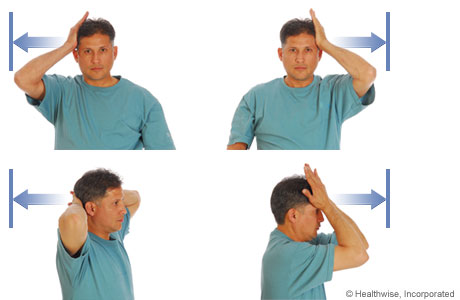
- This exercise strengthens the weak muscles without aggravating the pain also useful in acute CS, & East to do Home exercise.
- Steps to do Exercise :
- In a sitting Position, Place both hands behind the neck & try the neck to push pressure on the hands & At the same time Resist with neck muscles, both hands maintain align position for 4 to 5 seconds & then relax.
- On the first day do 5 repetitions & on the second day 10 repetitions. Do some exercise on the forehead & side of the neck.
- Do the exercise again, pressing on the side of the head. Repeat 5 times. Switch to other sides.
scapular stabilization exercise
- scapular down: you are abdominally engaged (tuck in ), you take a breath in & you pull your scapula down toward your glutes, it is
- a very small movement. Take a breath again & pull them down again, big breath in & pull them down & you like hands supinated here also. pulling those shoulders down.
Scapula stabilization protocols
- Description
- The scapula is a base of support to the shoulder joint & all movements of the upper extremity
- Poor scapular stabilization can give to a variety of upper quadrant syndromes such as:
- shoulder impingement, shoulder instability, cervical strain, nerve entrapment & muscle strains.
- Hints; While performing exercises, keep your shoulder rolled back & down
scapular stabilization exercise
- scapular down: you are abdominally engaged (tuck in ), you tack a breath in & you pull your
- scapula down toward the glutes, it is a very small movement. Take a breath again & pull them down again, big breath in & pull them down & you like hands insulated here also. pulling those shoulders down.
Scapular retraction (Shoulder Blade Squeezes)
- Relax head & neck. Stand with good posture and squeeze your shoulders back.
- Avoid shrugging the shoulder sand then keeps the abdominal tight.
- Hold for 10 sec then Relax shoulder and repeat 10 times.
- Frequency: 1 set. Three times a day.
- Goal: Increase strength of scapular stabilizing muscles.
External rotation
- Attach theraband to a stable object at a waist level
- Roll shoulders back & down & maintain this position
- Place a towel between elbow & side and then slowly rotate hand away from the abdomen
- Hold 3 sec. Repeat 12-15 times
- Frequency: one set. 3 times a day.
- Goal: Increase strength of scapular stabilizing muscles.
Shoulder diagonal
- The patient stands with a theraband under their opposite foot
- While grasping theraband and bringing shoulders back & down
- With the hand at your opposite hip, slowly raise it up across
- your body, as if you are drawing the sword.
- Hold 3 seconds and repeat 12-15 times
- Frequency: one set. 3 times a day.
- Goal: Increase strength of rotator cuff muscles.
Horizontal rows
- Secure theraband surrounds a stable object, like a pole
- The patient can either kneel or stand
- Grasp both the ends of the theraband,
- Bring shoulders back & down
- Slowly pull your elbows back & squeeze your shoulder blades together
- Hold 3 seconds & repeat 12-15 times
- Frequency: 1 set. Three times a day.
- Goal: Increase strength of rotator cuff muscles
shoulder extension
- Secure theraband surrounds a stable object, like a pole
- The patient can either kneel or stand
- Grasp both ends of the theraband, bring shoulders back & down
- With arms extended, slowly pull hands straight down until even with the hips
- Hold 3 seconds and repeat 12-15 times
- Frequency: 1 set. Three times a day.
- Goal: Increase strength of rotator cuff muscles.
Angle wings
- Stand with arms overhead
- Keeping the elbows to the side, slowly lower arms
- Try put the elbows into the back pockets
- Squeeze shoulder blades together
- Hold 10 sec. Repeat 10 times
- Frequency: 3 sets. 1-2 times per day
- Goal: Increase scapular strength
Active: push with a plus
- Start in a push-up position
- Hands shoulder-width apart
- Keep back and hips in line
- Push through hands, keeping the elbows straight
- Return to starting position
- Frequency: 3 sets of 15 repetitions & 3 times per week
- Goal: Improve shoulder strength/endurance
Physioball scapular exercise
- Stand with the hand placed on the physio ball against a wall
- Bring shoulders back and down
- gradually & slowly roll your hand side to side over the ball
- Maintain shoulders back and down
- Frequency: 3 sets of 15 repetitions 3 times per week
- Goal: Improve scapular strength
platform walk
- begin with the push-up position to the side of a short platform or aerobics step
- Slowly walk hands up onto the platform & off the other side
- Maintain push-up position
- Frequency: 3 sets of 8-10 reps 3 times per week
- Goal: Improve scapular and shoulder strength
Cervical Soft collar :
- This is a padded ring that wraps around the neck & is held in place with Velcro. Your doctor may advise you to wear a soft cervical collar to reduce neck motion during the jerky day-to-day activity & allow the muscles in your neck to rest.
- A soft cervical collar should only be worn for a short period of time during day-to-day activity since long-term wear may decrease the range of motion of the neck & also the strength of the muscles in the neck.
Surgical treatment :
- The mainstay of the surgical treatment for degenerative cervical disorders involved decompression of the neural elements often combined with this arthrodesis.
- Decompression may be achieved using an anterior, posterior, or combined approach. Recommended decompression is anterior when there is anterior compression at 1 or 2 levels & no significant developmental narrowing of the canal.
Do’s cervical spondylosis:
- If the neck pain is severe, it is time to do some exercise and therapeutic exercises to strengthen the neck, arm, and back muscles. This is good for the natural healing process of the body and most importantly, it will bring better results. Exercising also helps prevent the patient from becoming dependent on medical aids.
- If a person has neck pain, he should do yoga. It increases the strength of muscles and increases the flexibility of muscles and joints post-neck pain.
- Patients with cervical spondylosis should always sleep on a firm bed. It is a good idea to lie down with a thin mattress and solid bedding.
- People with neck pain should check that the bed is warm before going to bed.
- Take regular breaks while watching television or working on the computer, and walk for short distances, especially when you know that stress is increasing. One of the most useful remedies for cervical spondylosis is frequent breaks from work. Avoid sitting in one position for long periods of time to avoid neck pain.
- When there is severe pain, it is important to stabilize your neck, relax, and do the recommended pain relief exercises. This is an equally important dose for cervical spondylosis; while taking it in the acute phase can help speed recovery, the problem can be prevented from getting worse.
- Wearing a cervical collar during the day can help support the neck and prevent the injury from getting worse. While this is another important factor in cervical spondylosis, it is important to use the cervical collar only for a short period of time during which stability is required.
- It is important that spondylosis patients keep their necks safe while traveling, playing, adventure sports, or other regular activities. An important dose for cervical spondylosis is to wear a seat belt while traveling in a car because bad bumps on unusual roads cause shocks, injuries, or pain.
Don’t s cervical spondylosis:
- Sleep posture significantly affects injury and pain. The most important thing for cervical spondylosis is to avoid sleeping on the abdomen because sleeping in such a position can prevent the neck from resting in a naturally aligned manner.
- Patients with spondylosis should avoid any sudden movements, such as sudden neck or body bending. This is one of the most important don’ts for cervical spondylosis, which can cause further damage to muscles and joints.
- It is advisable to make slow movements that give the body time to absorb the change.
- Another common condition for cervical spondylosis is to avoid tilting to one side when rising from a sleeping position. This can put more strain on the neck and cause more pain.
- While sleeping without a pillow or using a very thin pillow is best, keeping pillows under the neck or shoulders can be very harmful to the neck. Therefore, using thick pillows or supporting pillows is also unsuitable for cervical spondylosis.
- The most important thing for cervical spondylosis is to avoid inappropriate postures, such as reading at bedtime or sitting for long hours at desk work.
- Hold the telephone on one shoulder and lean on it for a long time.
- Lifting heavy weights or doing high-impact exercises are some of the hardest things to do for cervical spondylosis.
- When trying to turn around, people with spondylosis should avoid bending the neck or body. But instead of moving your legs first, rotate them.
- Another essential requirement for cervical spondylosis is to avoid spinal manipulation or strenuous exercise when severe pain occurs. Instead, rest and relaxation exercises can help.

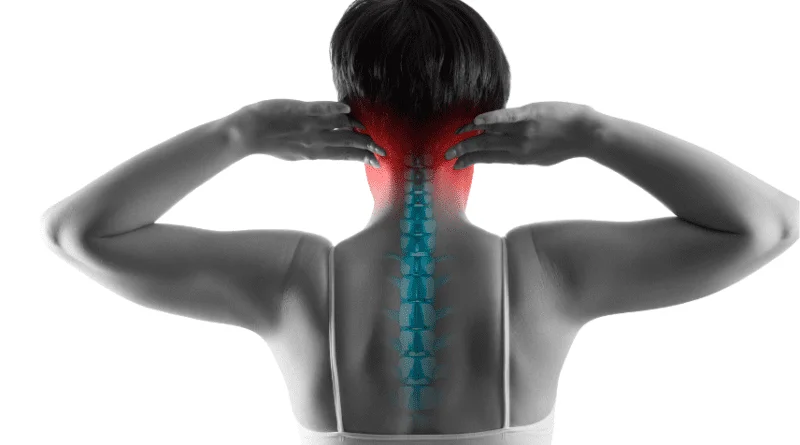
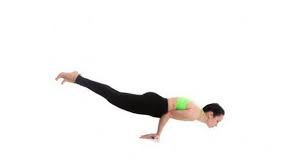
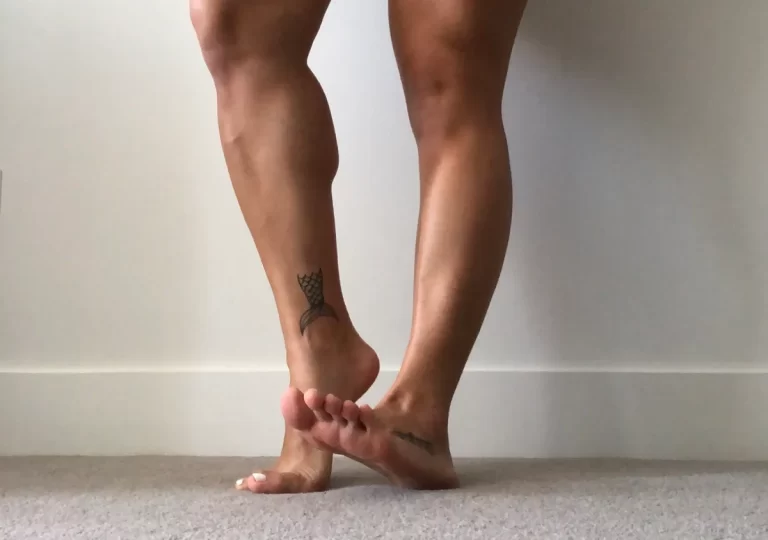
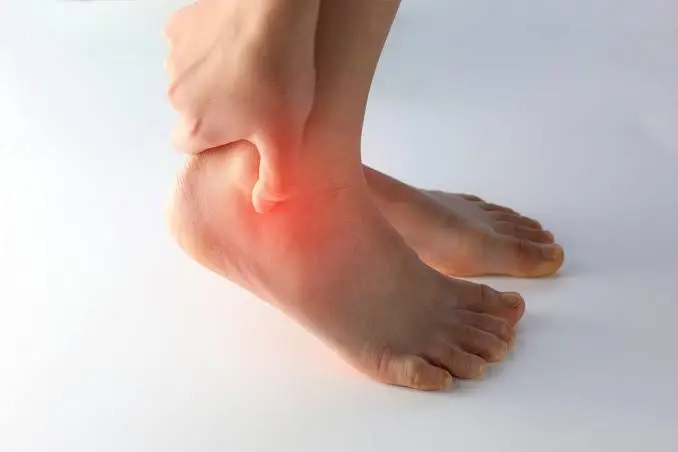
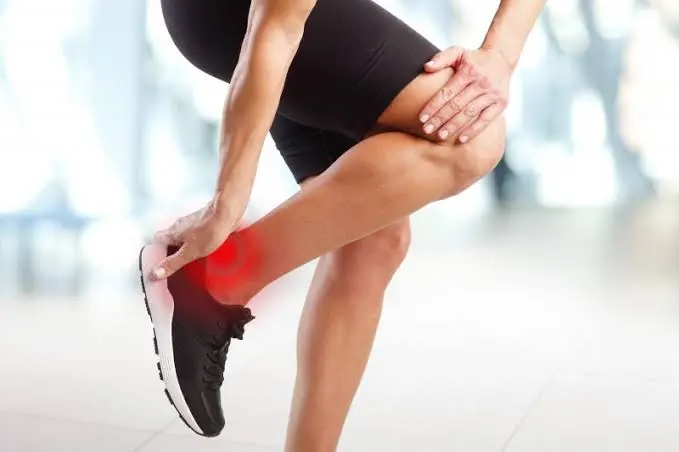
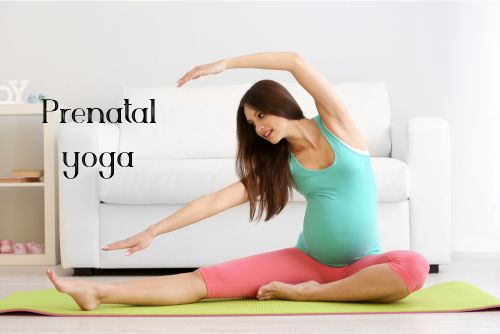
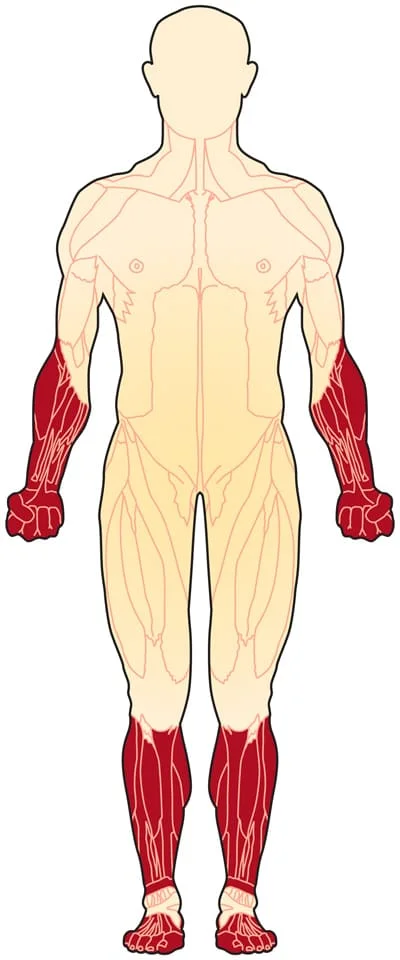
One Comment